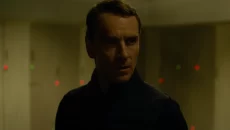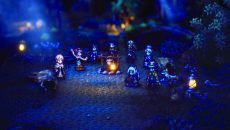David Fincher, the director of “Fight Club,” is one of the show’s producers. (Photo courtesy of Netflix)
Troy Lafond
Connector Editor
“Love, Death & Robots” is a Netflix adult animated anthology sci-fi show where each of the 18 episodes focuses on either love, death, robots or a combination of each. Each episode was animated by a different team from various countries around the world, giving each episode its own unique animation style and flair. It is intended to be a reimagining of the 1981 film “Heavy Metal,” which was also a collection of anthologies centered around similar themes.
The central issue with “Love, Death & Robots” comes down to this basic premise. Each episode focuses on one or more of these three themes, but the connection is so loose that it barely feels like these episodes belong in the same series. The lack of a strong, individual and unifying theme between each episode that is present in most anthologies makes it feel a bit messy. If each episode was a sci-fi love story, or a story about sci-fi loss, or a story about sci-fi robots, it would feel like much more of a put together show. Instead, the end result is a collection of shorts with little to do with one another and no real need to be connected in any way.
This would not be nearly as much of an issue if all of the episodes were actually good. However, the strong episodes in this series are few and far between. The majority of episodes follow a similar structure, where there are a few minutes of exposition, a lot of action mid-episode and then a final plot twist that makes the world more interesting, only for this world to be left behind. As a result, each episode feels more like a proof-of-concept for a more fleshed out full show, but extremely underwhelming as a single episode that is unlikely to be returned to. The short episode length, with every episode ranging between six and 17 minutes, also hinders the show significantly. It is very much designed to be consumed in short, easy, bite-sized chunks, but with so much of each episode focused on the exposition of the sci-fi world the characters inhabit, there is ultimately very little time to develop the connections to these characters that are needed to make these stories impactful. Many of the stories revolve around themes of trauma, loss and sacrifice, but these stories mostly come dead on arrival without the time to even establish, let alone develop the characters.
Underneath the surface of this show lies a greater issue, and that is the representation of female characters. The majority of female characters are either completely useless caricatures to be saved by a male, are only shown to be competent and useful when depicted completely nude or as victims of severe trauma. The most egregious example of this is in the third episode which features a female character running away from a murderer. The murderer is shown to be run down, heavily clothed and overall just beaten up, while the female character is mostly cleaned up, conventionally attractive with exposed breasts for the whole runtime. This stereotypical and borderline sexist imbalance in the presentation of their male and female characters is present for just about every single episode.
When “Love, Death & Robots” is not showcasing gratuitous nudity or violence, it is usually making unnecessary, unfunny and over-the-top sexual jokes. The humor style is like a sci-fi “Family Guy,” and rarely do these jokes ever match the tone of the episode. As a result, the show feels less like an artistic attempt and more like an empty, short-sighted appeal to hyper-masculinity.
Thankfully, there are a few and far between episodes that rise above the rest of the pack and manage to tell full, engaging stories in their limited runtime. Episodes such as “Lucky 13,” “Three Robots” and “Suits” manage to tell full stories with somewhat fleshed out and engaging characters in a unique world and in the end just are fantastic on all fronts. While these kinds of standouts are certainly to be applauded, it makes the rest of the series’ weaknesses even more apparent.
Most of the functional issues with “Love, Death & Robots” would not be an issue if there were other factors in the show to make them better. However, it ends up being simply a poor combination of underdeveloped worlds, poorly developed characters, uninvolving storylines and problematic storytelling tropes that end up just being one big mess.
Final grade: D-




